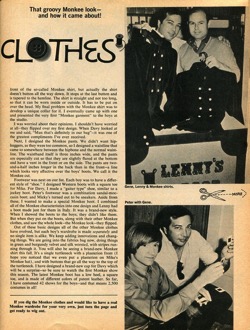You Can Please Some of the People Some of the Time… None of the People All of the Time: A History of the Art of Adaptation in Movies like Dune, The Godfather, Harry Potter and More!
Dr. Rosanne Welch speaks on A History of the Art of Adaptation in Movies like Dune, The Godfather, Harry Potter and More! at the California State University, Fullerton Library
Part of the program series for Dune by Frank Herbert: A 50th Anniversary Celebration.
Watch this entire presentation
Transcript:
I think it’s a really good movie — I mean it got an Oscar nomination. I just don’t think in this case you want to know about the book. Now, I read the book afterwards and because I was so interested in the Tom Wingo character, I was bored with the Luke character. That didn’t work for me and I thought, Oh, I wish I had read it first so I could have made that comparison, but an interesting look at how big a change you can make and still, essentially, create a successful storyline having to do with major characters who were invented. So that was a huge controversy.
About this talk
Dr. Rosanne Welch (RTVF) speaks on the craft of history of film adaptations from the controversy of the silent film Birth of a Nation (protested by the National Association for the Advancement of Colored People in 1915) to Breakfast at Tiffany’s (to which author Truman Capote famously said, “The only thing left from the book is the title”) to The Godfather . Naturally, the behemoth in adaptation – Harry Potter (which depended on the relationship created by adapter Steve Kloves and author J.K. Rowling) will be discussed, as will the subject of this month’s celebration: Dune.
Date: Wednesday, October 14, 2015 Time: 1:00pm – 2:00pm
About Dr. Rosanne Welch
Dr. Rosanne Welch is a professor in the Low Residency MFA in Screenwriting Program from Stephens College, California State University, Fullerton, Mount San Antonio Community College and Cal Poly Pomona. In 2007, she graduated with her Ph.D. in 20th Century U.S./Film History from Claremont Graduate University. She graduated with her M.A. in 20th Century United States History from California State University, Northridge in 2004.
Welch is also a television writer/producer with credits for Beverly Hills 90210 , CBS’s Emmy winning Picket Fences and Touched By An Angel . She also writes and hosts her own podcasts on 3rdPass.media, her first one titled “Mindful(I) Media with Dr. Rosanne Welch.”
Her upcoming book, “Why The Monkees Matter: Teenagers, Television and American Pop Culture” will be published in Fall 2016
Three Ring Circus: How Real Couples Balance Marriage, Work and Kids and The Encyclopedia of Women in Aviation and Space are two books she has written. Los Angeles Times and the Journal of Screenwriting hold some of her published articles.
Dr. Rosanne Welch Web Site and Blog
Podcast: Play in new window | Download
Subscribe: RSS
![Final Thoughts On Adapting The Prince of Tides from A History of the Art of Adaptation [Video] (0:40)](https://rosannewelch.com/wp-content/uploads/2017/01/adapt-32-prince-of-tides-3.jpeg)




![More On The Vietnam War and The Monkees from 1960’s TV Censorship and The Monkees with Dr. Rosanne Welch [Video] (1:03)](https://rosannewelch.com/wp-content/uploads/2017/01/monkees-censorship-16-vietnam-2.jpeg)

![When Women Ran Hollywood: Citizen Jane Film School 2016 [Video] (1 hour)](https://rosannewelch.com/wp-content/uploads/2017/01/citizen-jane-panel-2016.png)
![More On Adapting The Prince of Tides from A History of the Art of Adaptation [Video] (1:00)](https://rosannewelch.com/wp-content/uploads/2017/01/adapt-31-prince-of-tides-2.jpeg)



![The Vietnam War and The Monkees from 1960’s TV Censorship and The Monkees with Dr. Rosanne Welch [Video] (0:49)](https://rosannewelch.com/wp-content/uploads/2016/12/monkees-censorship-15-vietnam.jpeg)

![Adapting The Prince of Tides from A History of the Art of Adaptation [Video] (1:03)](https://rosannewelch.com/wp-content/uploads/2016/12/adapt-30-prince-of-tides.jpeg)